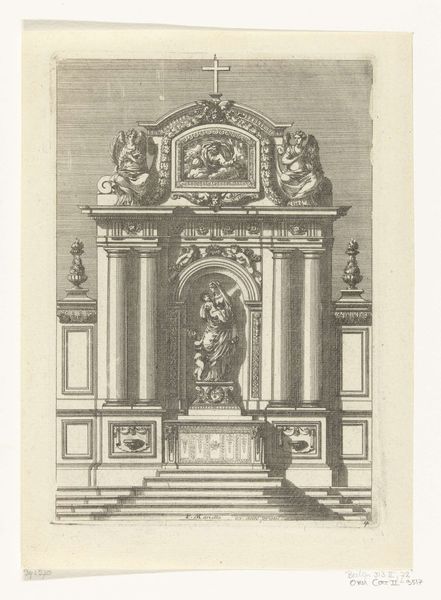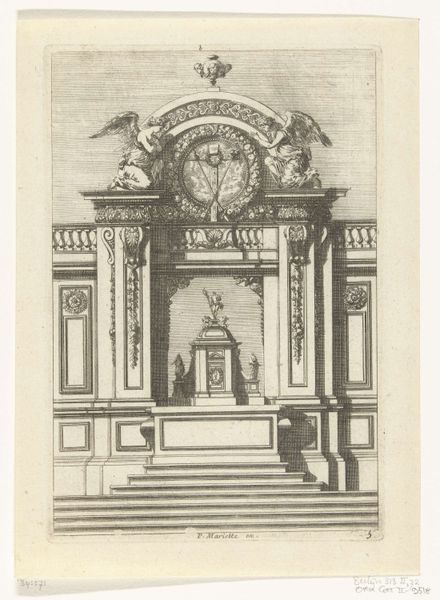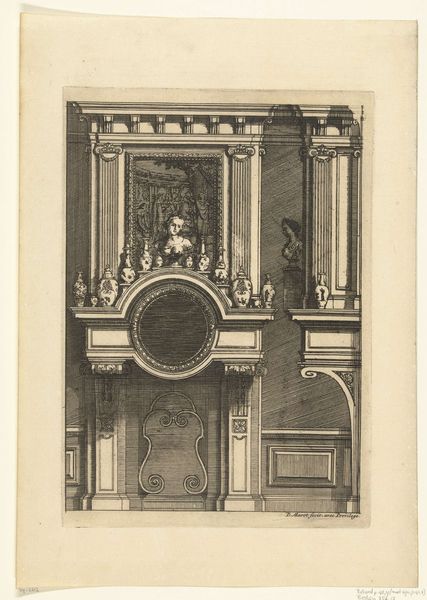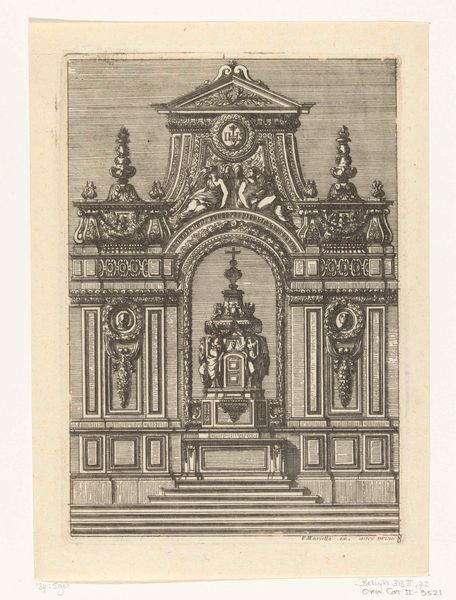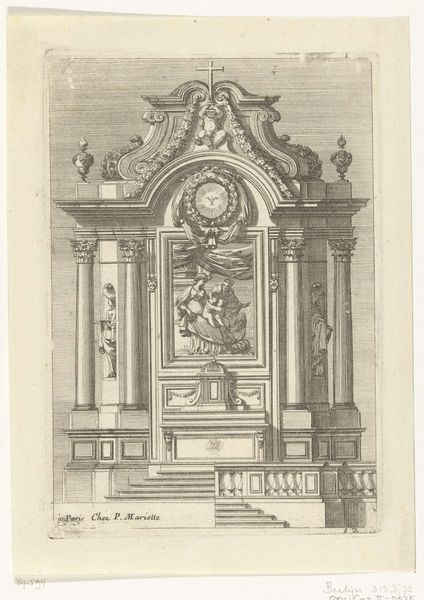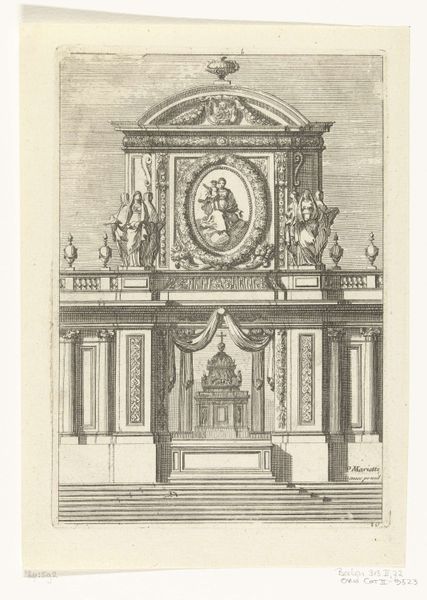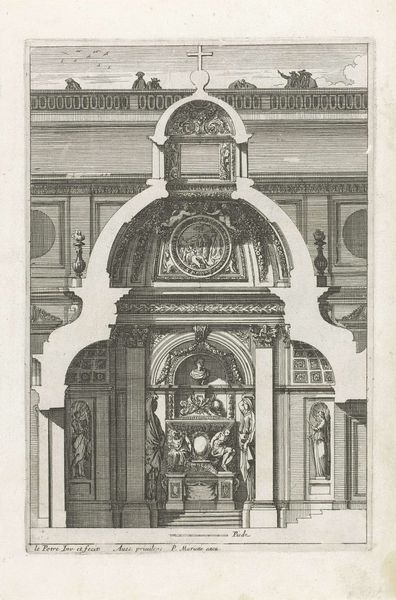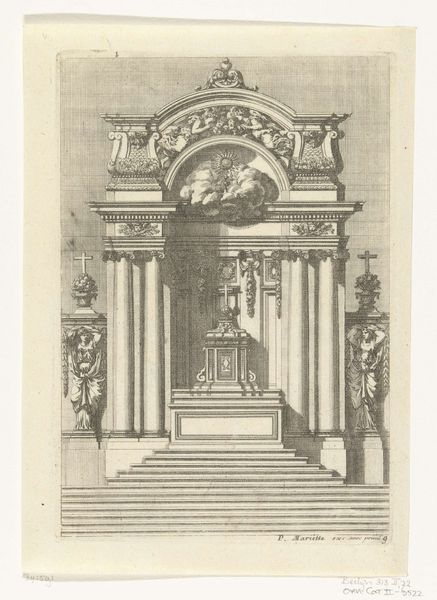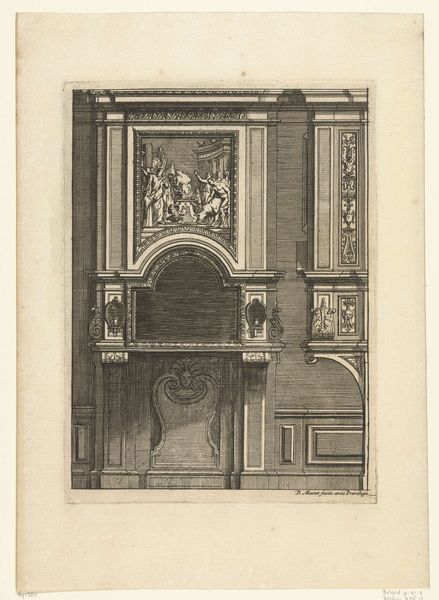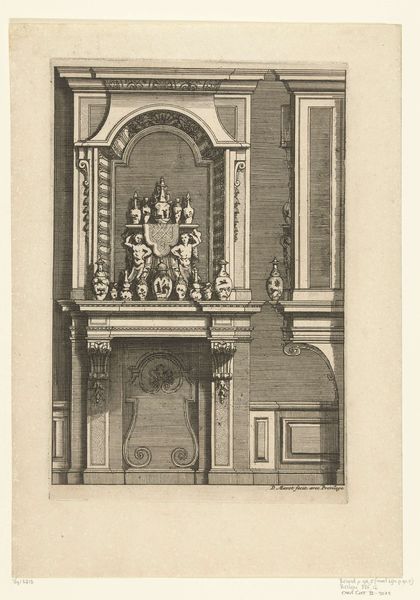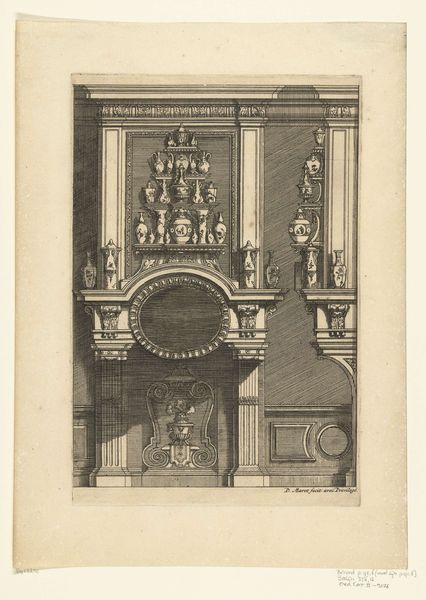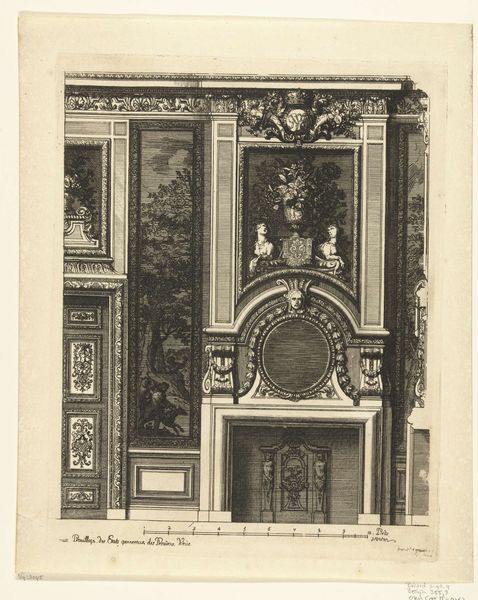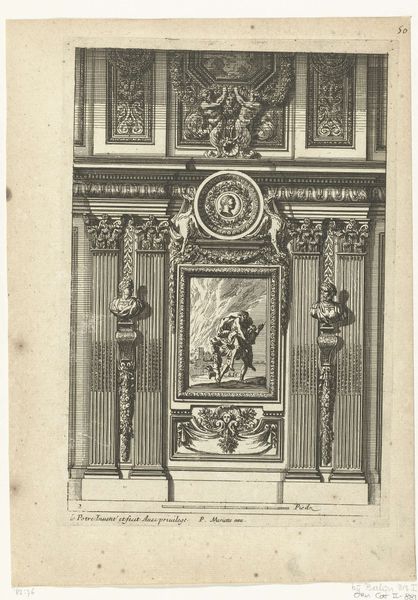
print, intaglio, engraving, architecture
#
light pencil work
#
baroque
#
mechanical pen drawing
# print
#
pen sketch
#
intaglio
#
pencil sketch
#
old engraving style
#
personal sketchbook
#
ink drawing experimentation
#
pen-ink sketch
#
pen work
#
sketchbook drawing
#
history-painting
#
engraving
#
architecture
Dimensions: height 196 mm, width 134 mm
Copyright: Rijks Museum: Open Domain
Editor: This is "Tabernakel met Aanbidding der Koningen," a print by Jean Lepautre from around 1666 to 1693. The engraving depicts an ornate architectural structure, with a smaller image of the Adoration of the Magi nestled within. The sheer detail is impressive, almost overwhelming. What jumps out at you when you see this piece? Curator: The density of ornamentation is certainly a key aspect. For me, this print acts as a window into the social and religious climate of the Baroque period, a period defined by grand displays of power. Consider the context in which it was produced. France, under Louis XIV, was establishing itself as a major force. Does the architectural detail seem excessive, perhaps even propagandistic to you? Editor: I can definitely see how the abundance of ornamentation could reflect a desire to project authority and importance. The tabernacle-like structure seems to frame and elevate the biblical scene, making it part of this grand statement. Curator: Exactly! The "Adoration of the Magi" was a popular subject for rulers, it presented the ideal of devout and worthy leadership validated by divine blessing. Also notice the interplay between the architectural and the religious elements: How does that relationship shape the artwork’s message? Editor: That's a great question. I see it creating a visual link between earthly power, symbolized by the architecture, and divine authority, represented by the religious scene. They seem to mutually reinforce each other. Curator: Precisely! The structure acts as a physical manifestation of this hierarchical relationship, positioning earthly rulers as divinely ordained. Thinking about this, do you view art's function during the Baroque as one of legitimizing the existing social order? Editor: Absolutely. Seeing it in this light really highlights the power dynamics embedded within the artwork, showing me it is more than just a beautiful image. Thank you. Curator: It is this connection to our lives that ultimately makes it worthy of study, allowing art history to connect us to culture in new and more intimate ways.
Comments
No comments
Be the first to comment and join the conversation on the ultimate creative platform.
